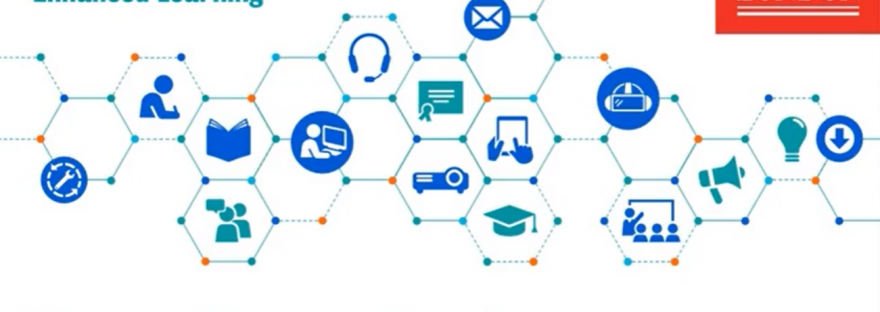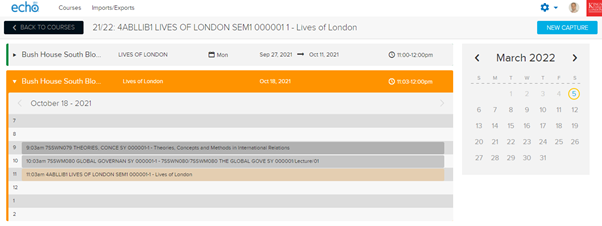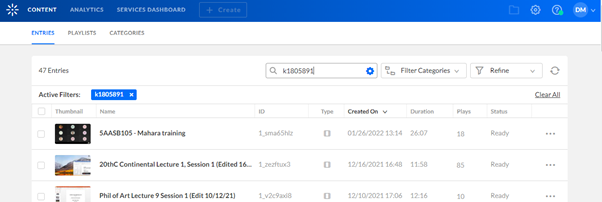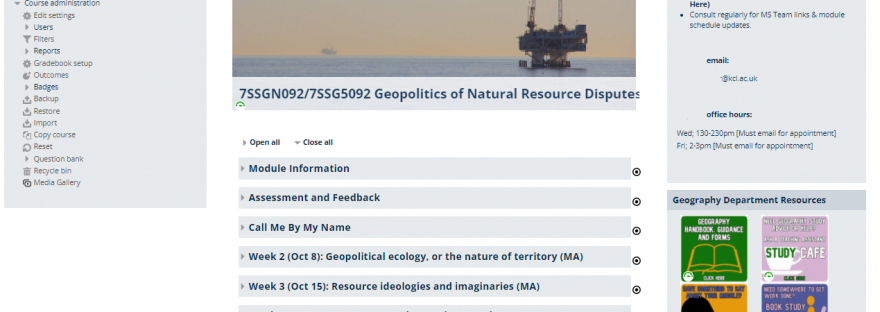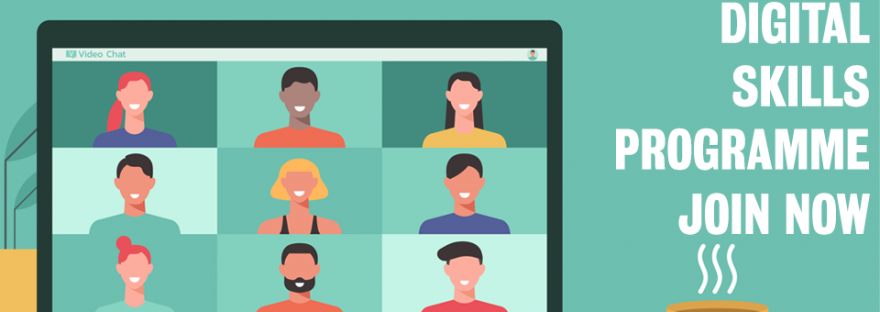Feedback from students from various channels across King’s have reported that there is a lack of consistency in the User Experience (UX) and User Interface (UI) across KCL’s digital platforms, particularly the website and across templates and module pages within KEATS. Continue reading “KEATS 3.11 UI Refresh”
Tag: online learning
Introduction of Captioning and Transcription Service at King’s College London
In September 2020 King’s College decided to commit to further developing the Captioning and Transcription Service available via the King’s media platform (Kaltura). Academic staff were provided with access to request high quality human transcriptions for their lecture recordings. Continue reading “Introduction of Captioning and Transcription Service at King’s College London”
Part 2: Embedding Digital Accessibility to the heart of everyday TEL work
This article has been divided in two parts. Part 1 discusses how the SSPP TEL team works to boost staff understanding of digital accessibility baseline. Part 2 provides an overview of the TEL training sessions available on the subject.
Part 2: TEL training sessions
The TEL Hub digital accessibility section is aimed at staff to access information in order to meet the basic requirements of digital accessibility baseline from a more administrative perspective. Continue reading “Part 2: Embedding Digital Accessibility to the heart of everyday TEL work”
Part 1: Embedding Digital Accessibility to the heart of everyday TEL work
This article has been divided in two parts. Part 1 discusses how the SSPP TEL team works to boost staff understanding of digital accessibility baseline. Part 2 provides an overview of the TEL training sessions available on the subject.
Allyship:
“the state of being an ally (= a person who helps and supports somebody) to a particular group of people that you yourself do not belong to, in order to help ensure their basic rights and ability to be happy and successful in society”- Oxford learner’s dictionary
What does digital accessibility mean to me? It means being able to embrace a platform for its intended use, because the people building it know how to create a great user experience – anticipating, rather than reacting to the needs of our diverse learning community. Being an ally. Continue reading “Part 1: Embedding Digital Accessibility to the heart of everyday TEL work”
Part 2: Reflections on collaboration/cross-institutional working in response to and after Covid-19
This article has been divided in two parts. Part 1 explains the online teaching challenges created by Covid-19. Part 2 presents the outcomes and conclusions after 2 years teaching online.
The volume of shared working, and working through a time of crisis, has helped to build collegiality, camaraderie and significant trust between teams. I believe this is evidenced by the devolution of central services to Faculty TEL teams (and not solely explained by capacity reasoning). For example: the provision of the Echo Scheduler role, Syllabus+ access being extended to TEL; and hopefully – successful pilot permitting – the Kaltura Management Console Super User role. Continue reading “Part 2: Reflections on collaboration/cross-institutional working in response to and after Covid-19”
Part 1: Reflections on collaboration/cross-institutional working in response to and after Covid-19
This article has been divided in two parts. Part 1 explains the online teaching challenges created by Covid-19. Part 2 presents the outcomes and conclusions after 2 years teaching online.
Covid-19 forced almost all teaching online in extremis and for an extended period of time. This was followed by at least a year of crisis management; attempting to continue to deliver the core functions of the College in the face of a global pandemic. Almost overnight TEL went from a support function to being of central importance to teaching and learning. Tools that may have been peripheral became, in effect, core. New tools rapidly became universal. The barriers between the substance of teaching and its delivery mechanisms began to dissolve. IT and TEL colleagues deserve immense credit for the way they managed the sudden massive increase in demand for their services, time and expertise. With the crisis period of the pandemic hopefully in the past, we can now reflect on the enhancements that have come about in our working practices, whether these were created or accelerated by necessity and which we choose to keep for the future. Some of the observations below are concrete, others are my personal reflections or opinions voiced by colleagues. Continue reading “Part 1: Reflections on collaboration/cross-institutional working in response to and after Covid-19”
Credit Harmonisation at King’s College: Case Study at the Faculty of Social Science and Public Policy
The majority of modules in King’s College use the 30/60 credit split. This structure was introduced over 15 years ago for undergraduate modules to replace the “course unit” model. However not all postgraduate modules were also moved to this new structure, meaning there were different credit values assigned to different modules at PG level. Continue reading “Credit Harmonisation at King’s College: Case Study at the Faculty of Social Science and Public Policy”
Preparing students for success in the digital world- The process of creating the Essential Digital Skills Programme
Digital competence and confidence are thought to be critical for success in higher education. However, despite a significant proportion of learning being online and evidence to counter the idea of digital nativity, these critical skills are often not explicitly taught at university. The COVID-19 pandemic outlined why it is so important for students to have the digital capabilities required to thrive in their academic, personal and professional lives. This blog reflects on the process King’s College London went through to create the Essential Digital Skills programme. Continue reading “Preparing students for success in the digital world- The process of creating the Essential Digital Skills Programme”
Gauging student engagement and understanding remotely – some tried and tested methods
The rapid pivot to a re mote education format during the 2020 pandemic, necessitated an agile approach to teaching and assessment. With bioscience class sizes ranging from ~25-720 students, ascertaining how well students understood taught concepts, was an essential yet challenging task. Despite the diversity of class sizes and subject areas, some tried and tested methods were found to be more effective and user friendly, for both our students and staff. Continue reading “Gauging student engagement and understanding remotely – some tried and tested methods”
Part 2: Teaching in the HyFlex Classroom: Benefits and Challenges
This article has been divided in two parts. Part 1 explains what HyFlex is and which are the key points to consider before using it. Part 2 presents a wide range of teaching activities that can be used in a HyFlex classroom. Continue reading “Part 2: Teaching in the HyFlex Classroom: Benefits and Challenges”
